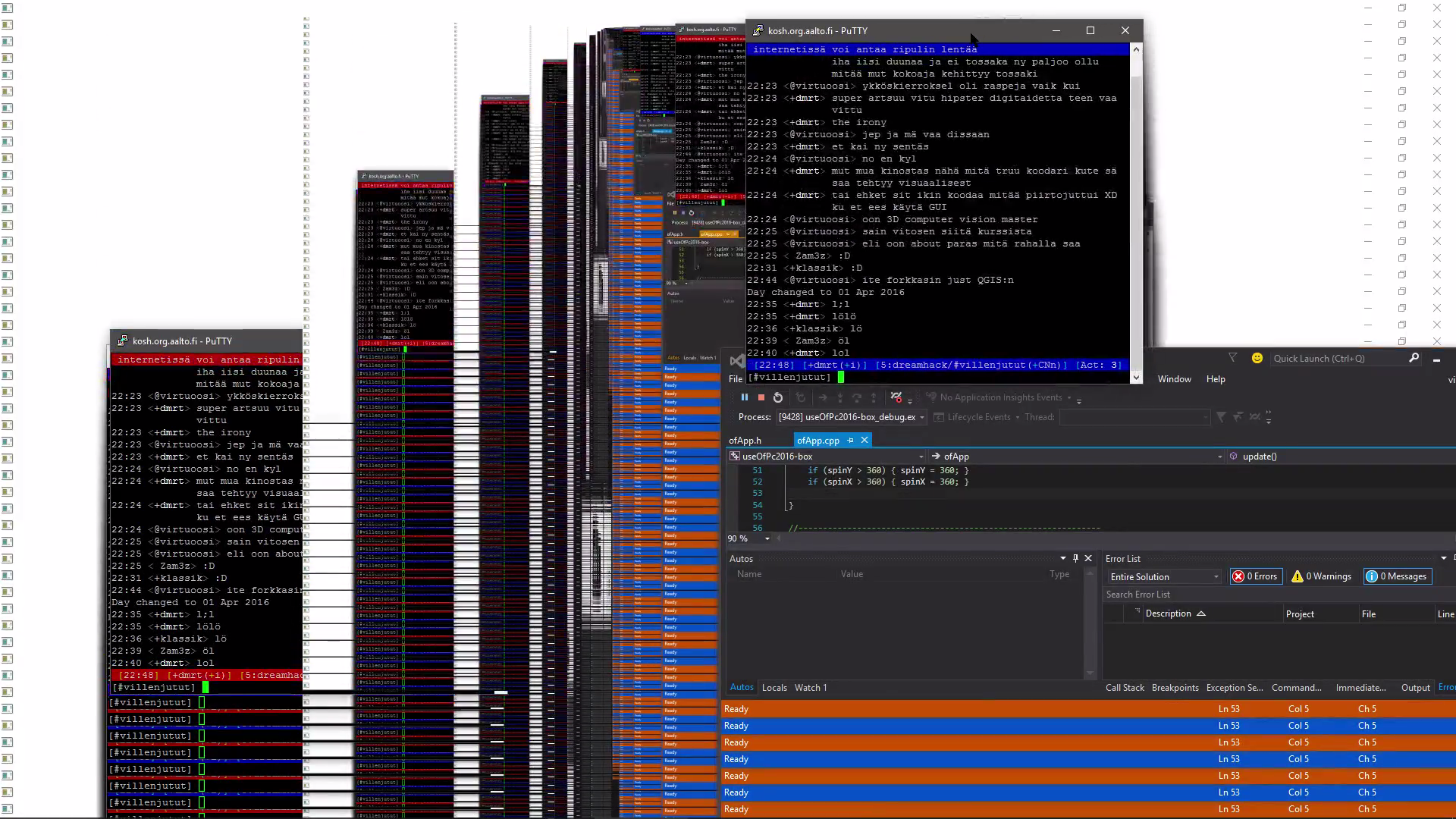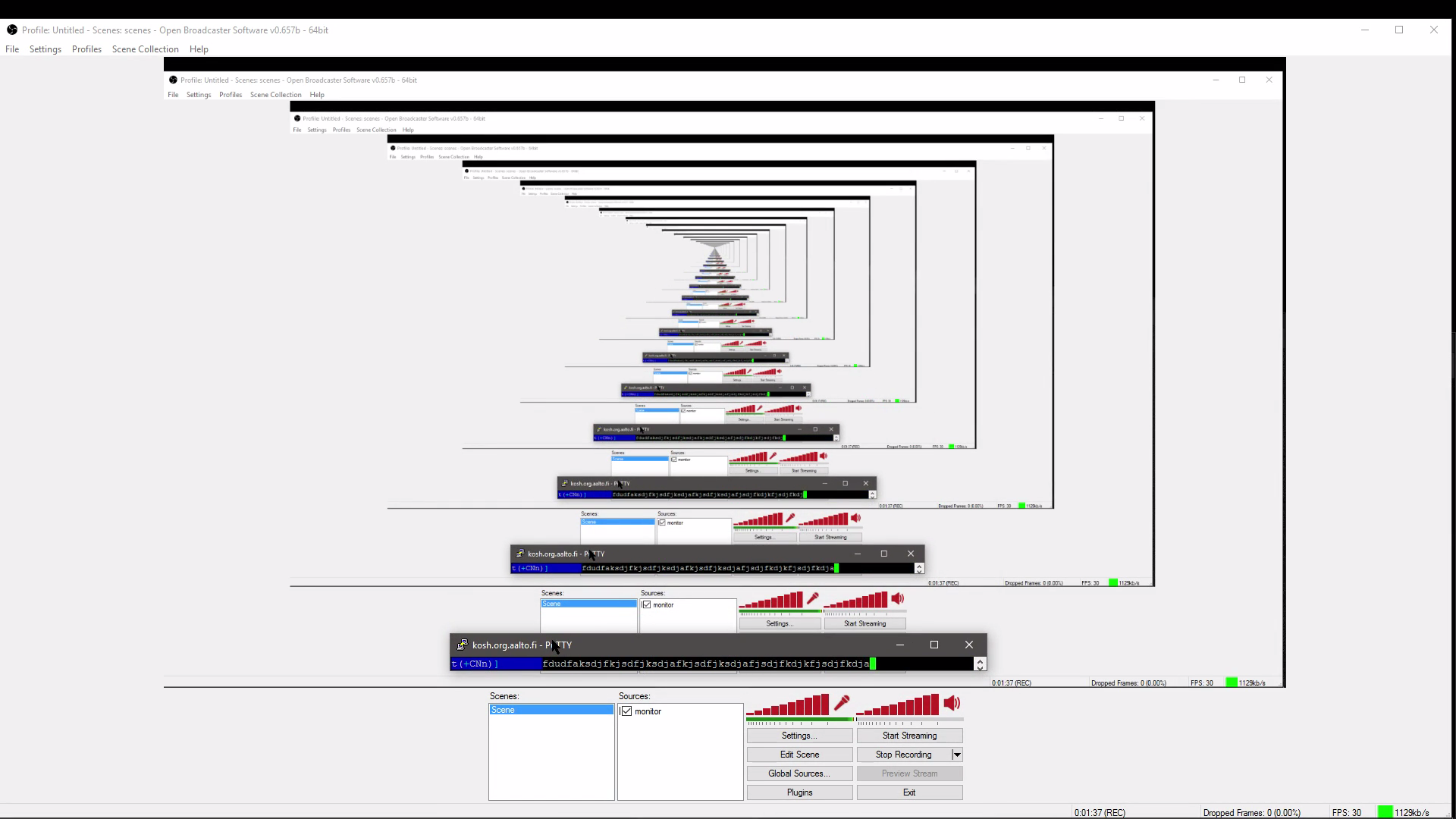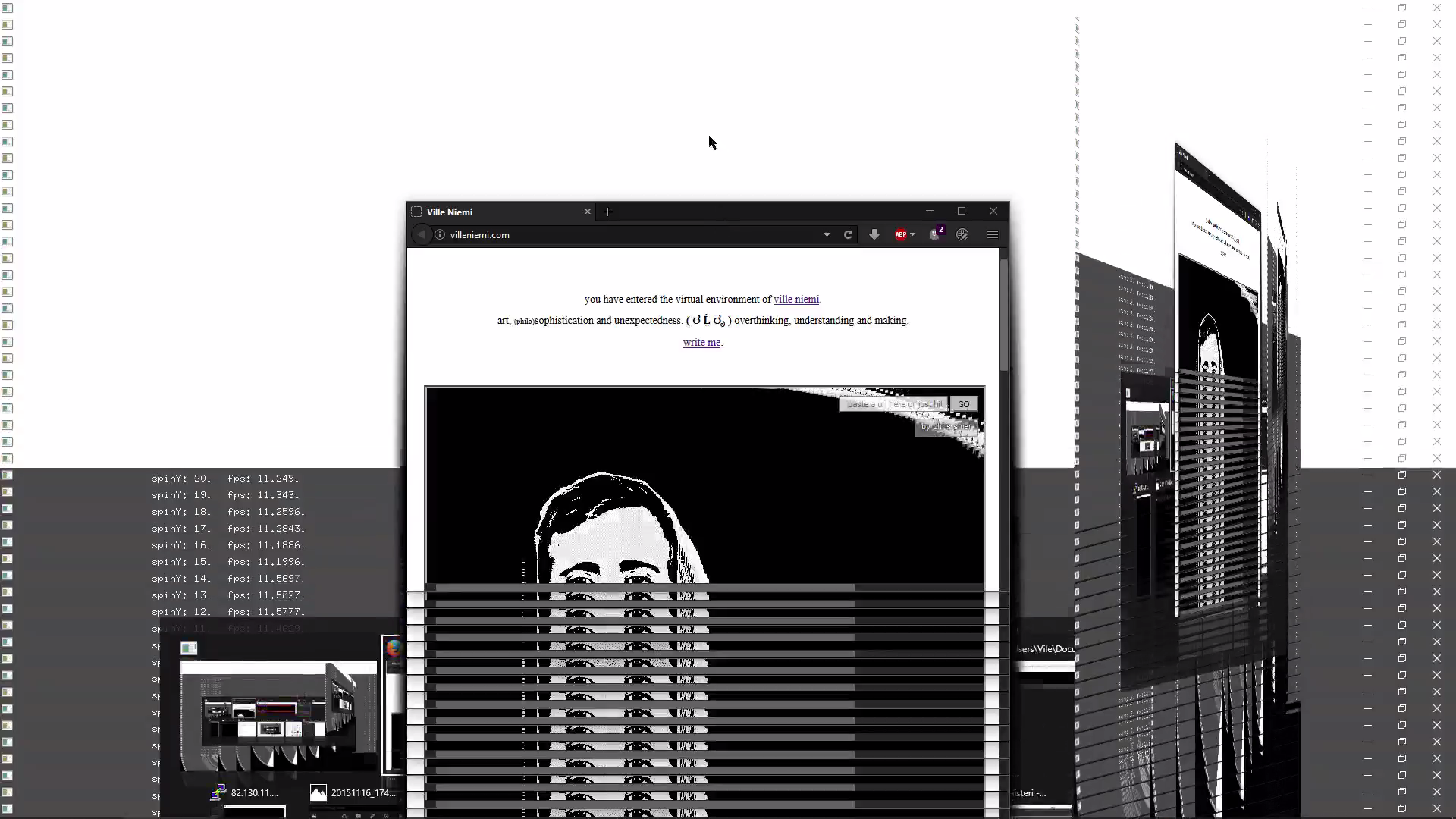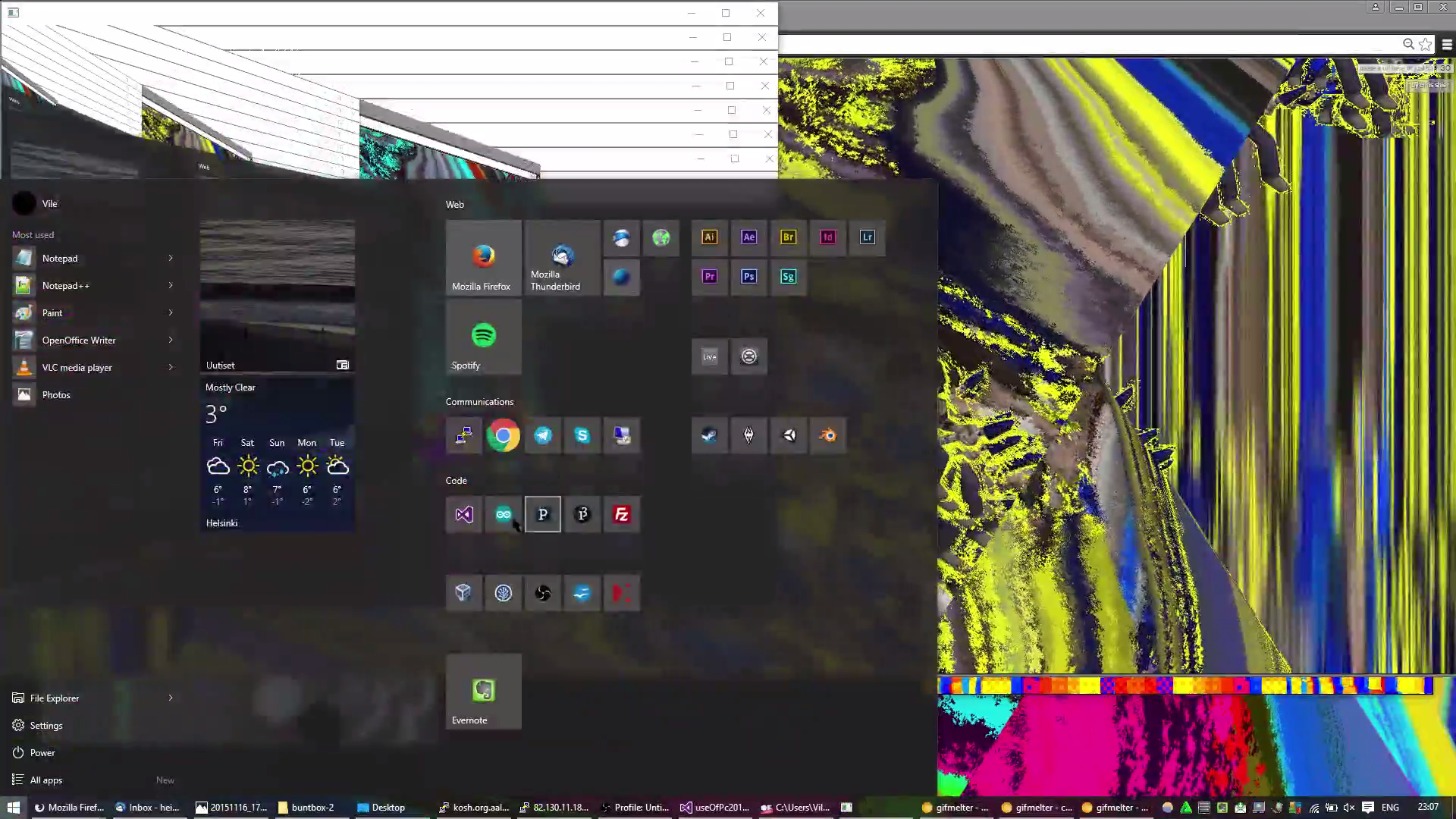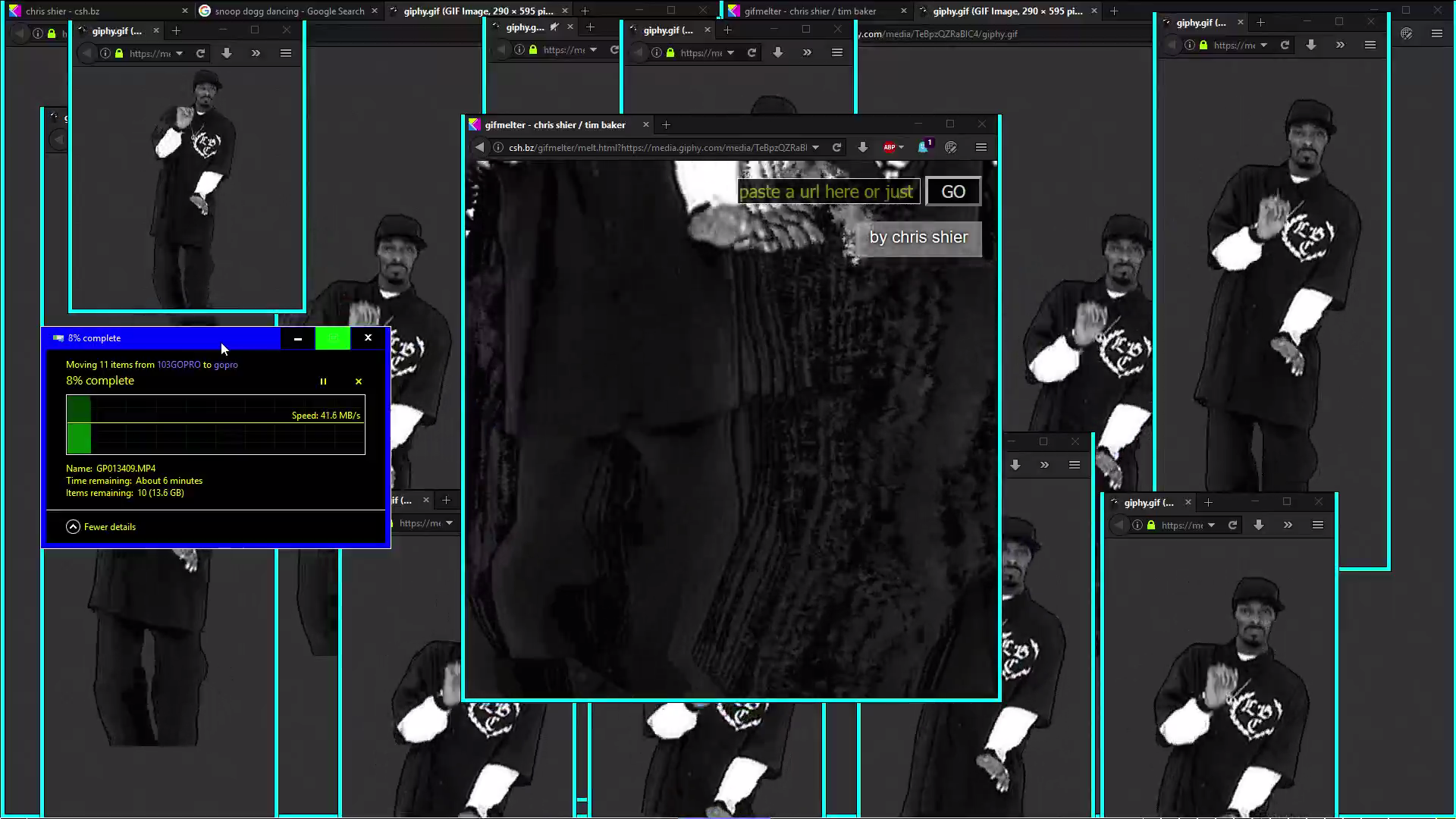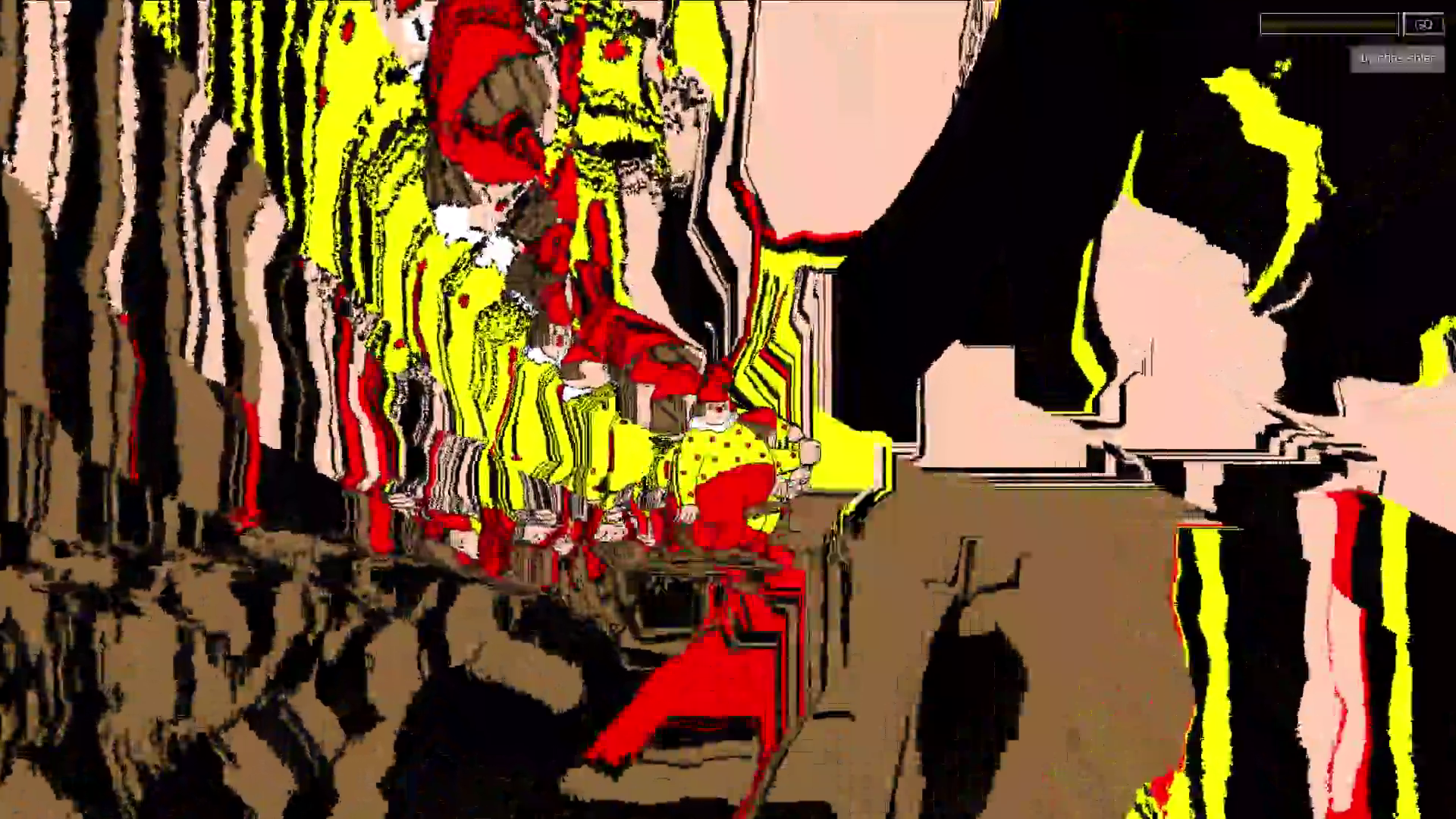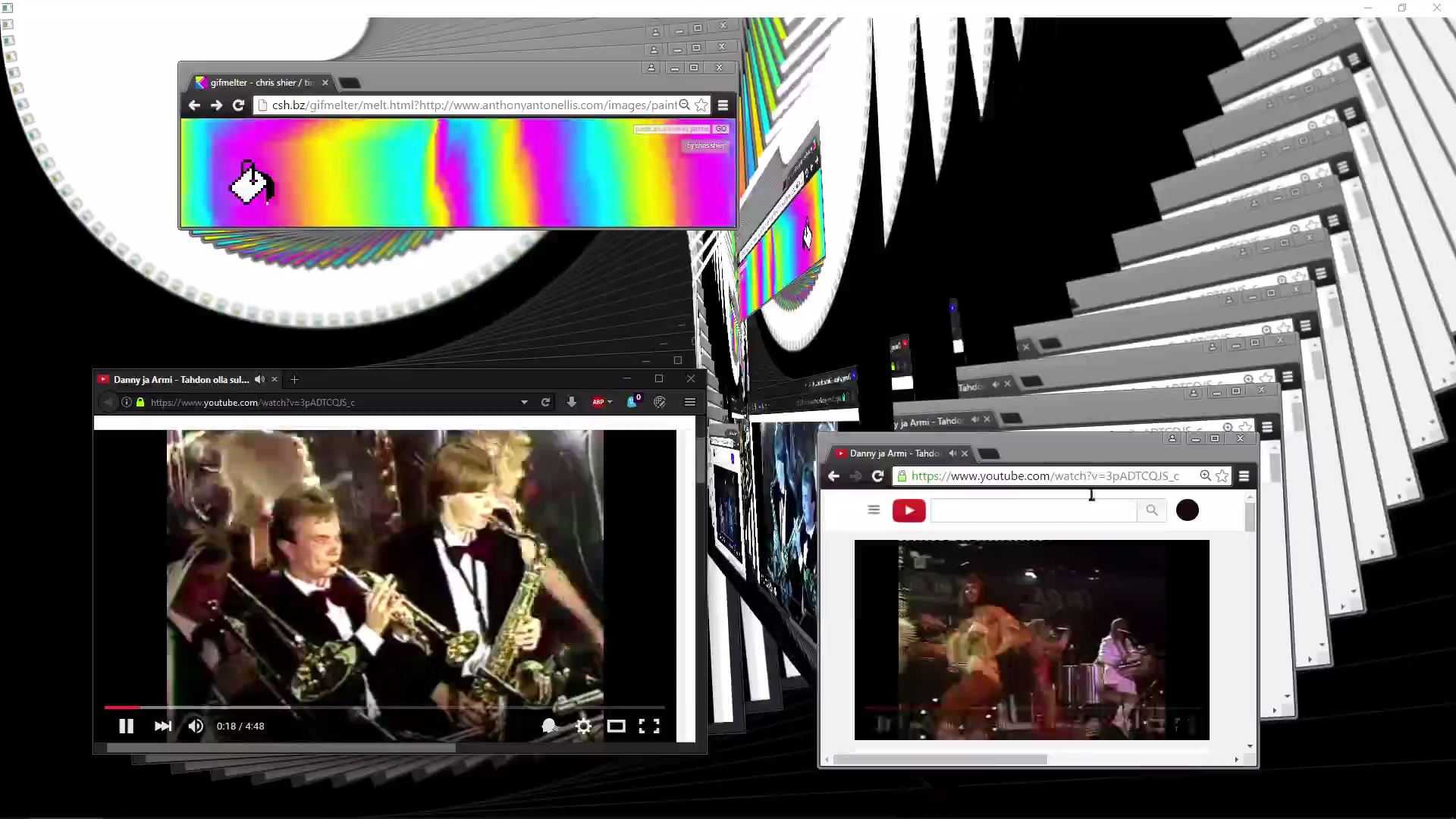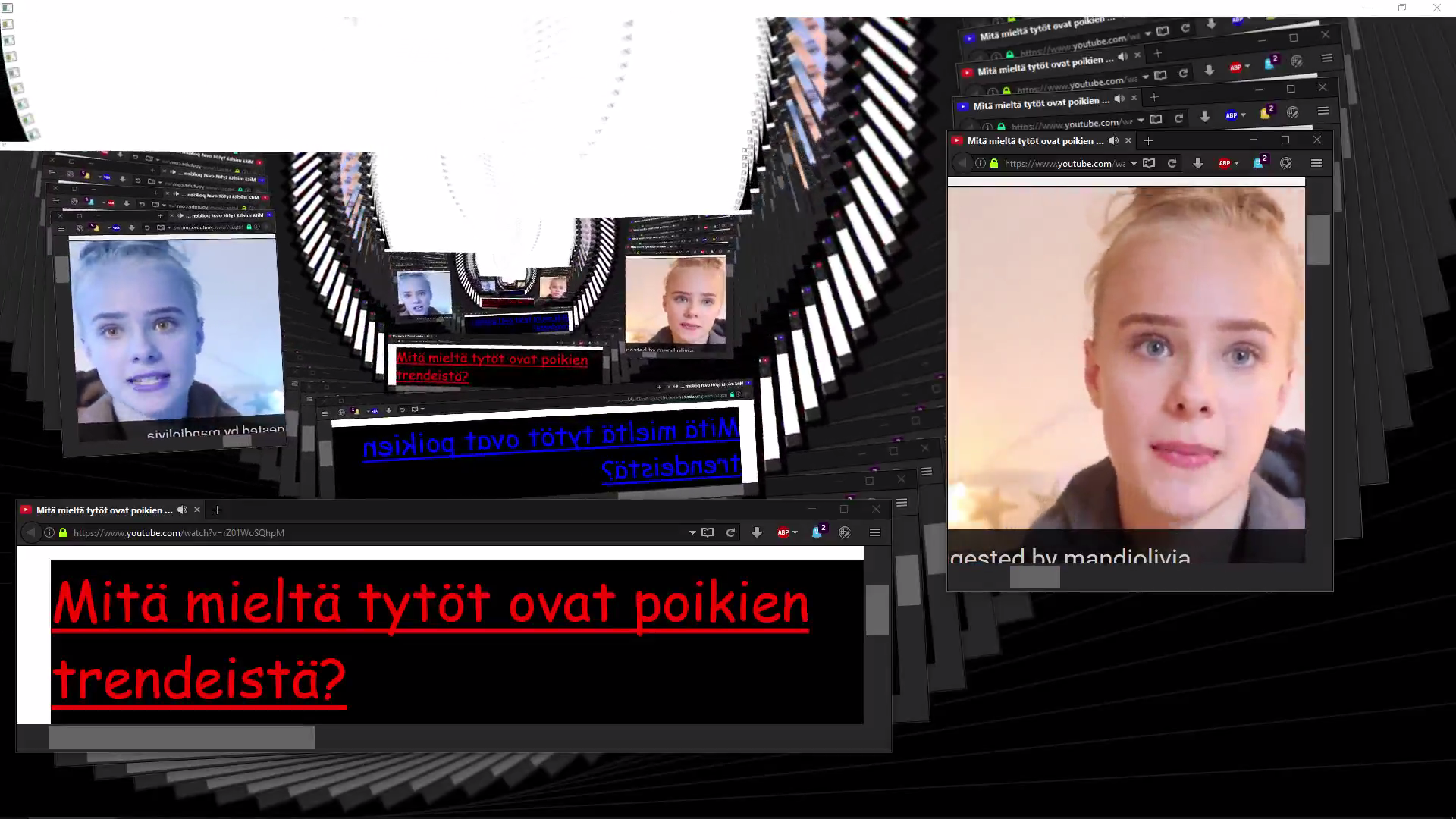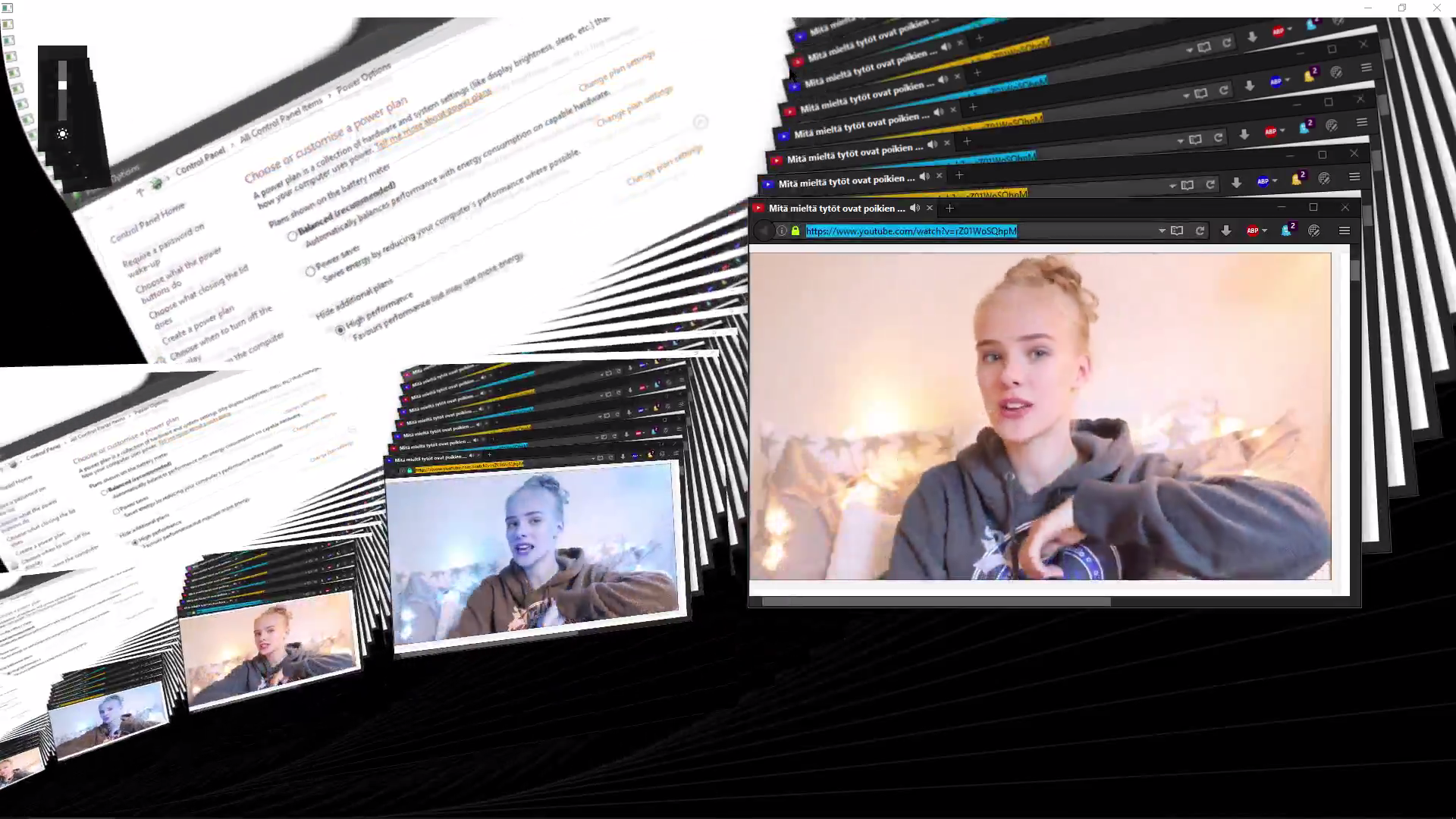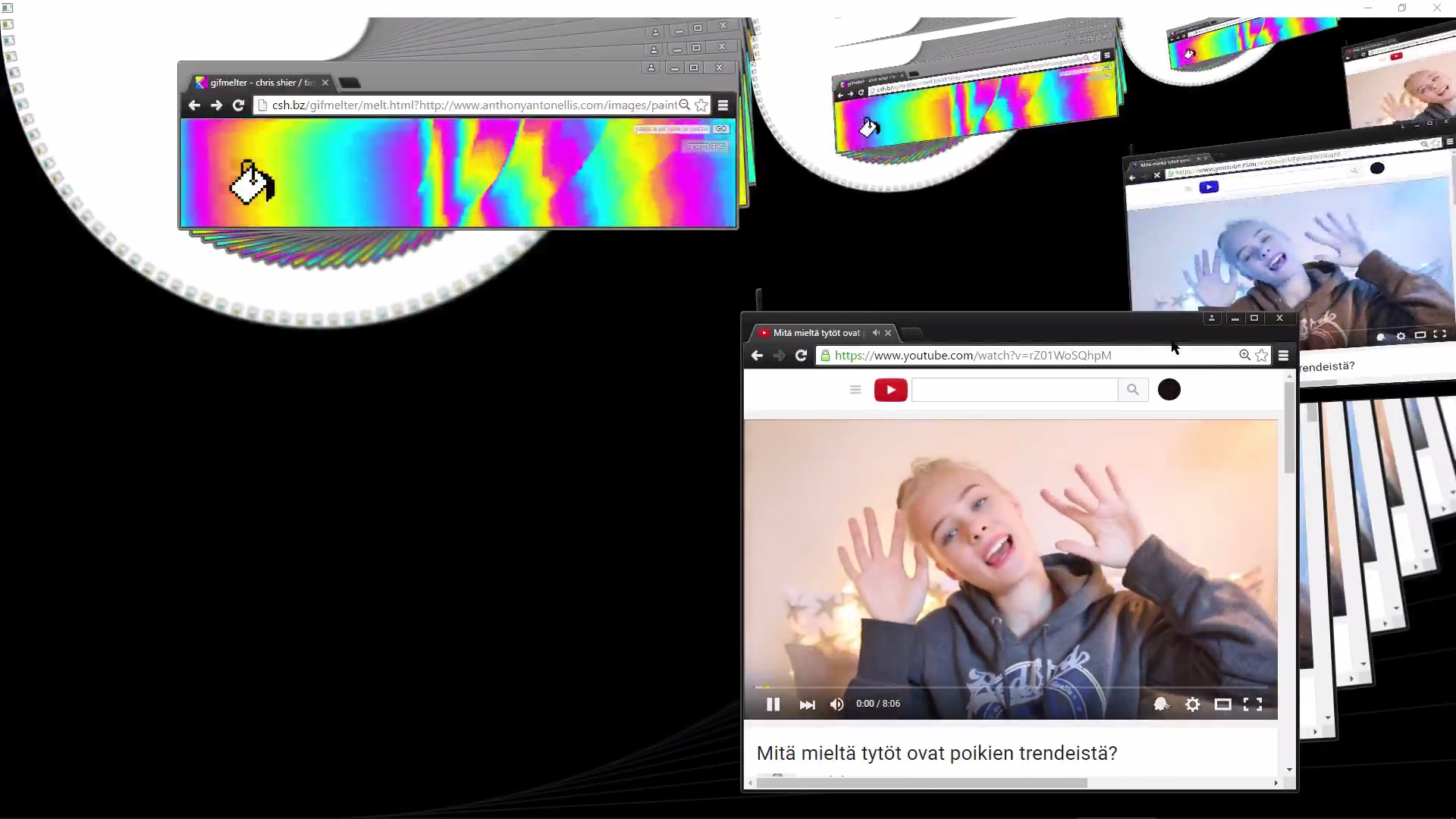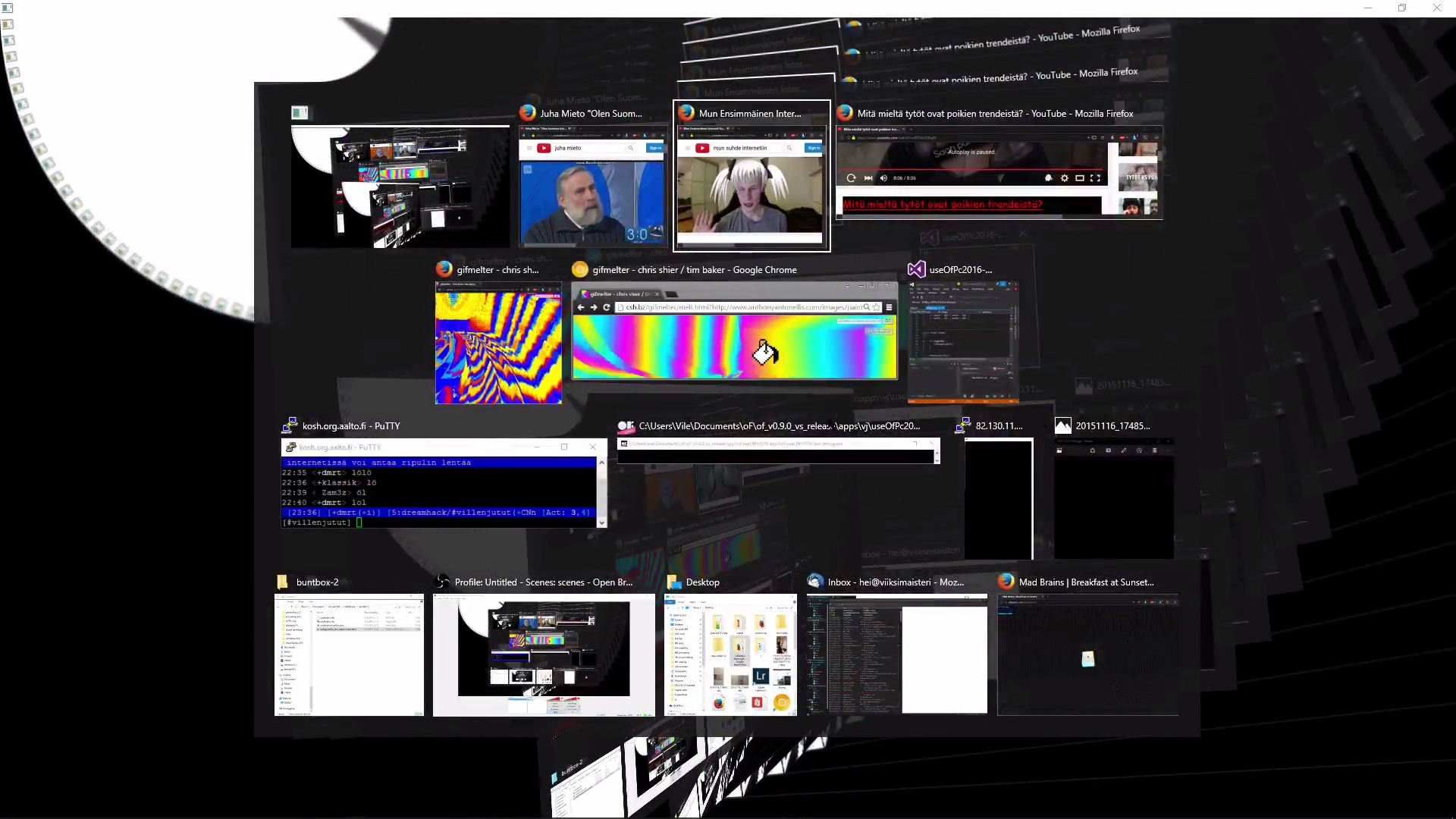
Performanssi, esitetty 1.4.2016, Ihana Baari @ Tiivistämö Suvilahti, Helsinki.
Kesto 4 tuntia.
Personal reflection on “The Use of a Personal Computer 2016”
First and foremost, the personal computer is dead, at least it will (should) be in the very near future. My performance could be examined as a nostalgic presentation of the interfaces we stare at, are accustomed to and interact with in particular in office environments, criticism on the simplicity-complexity and effectiveness-obstrusiveness of our digital systems, ultimately the naivety of computer operating systems’ interfaces. Rectangular windows within windows within Windows.
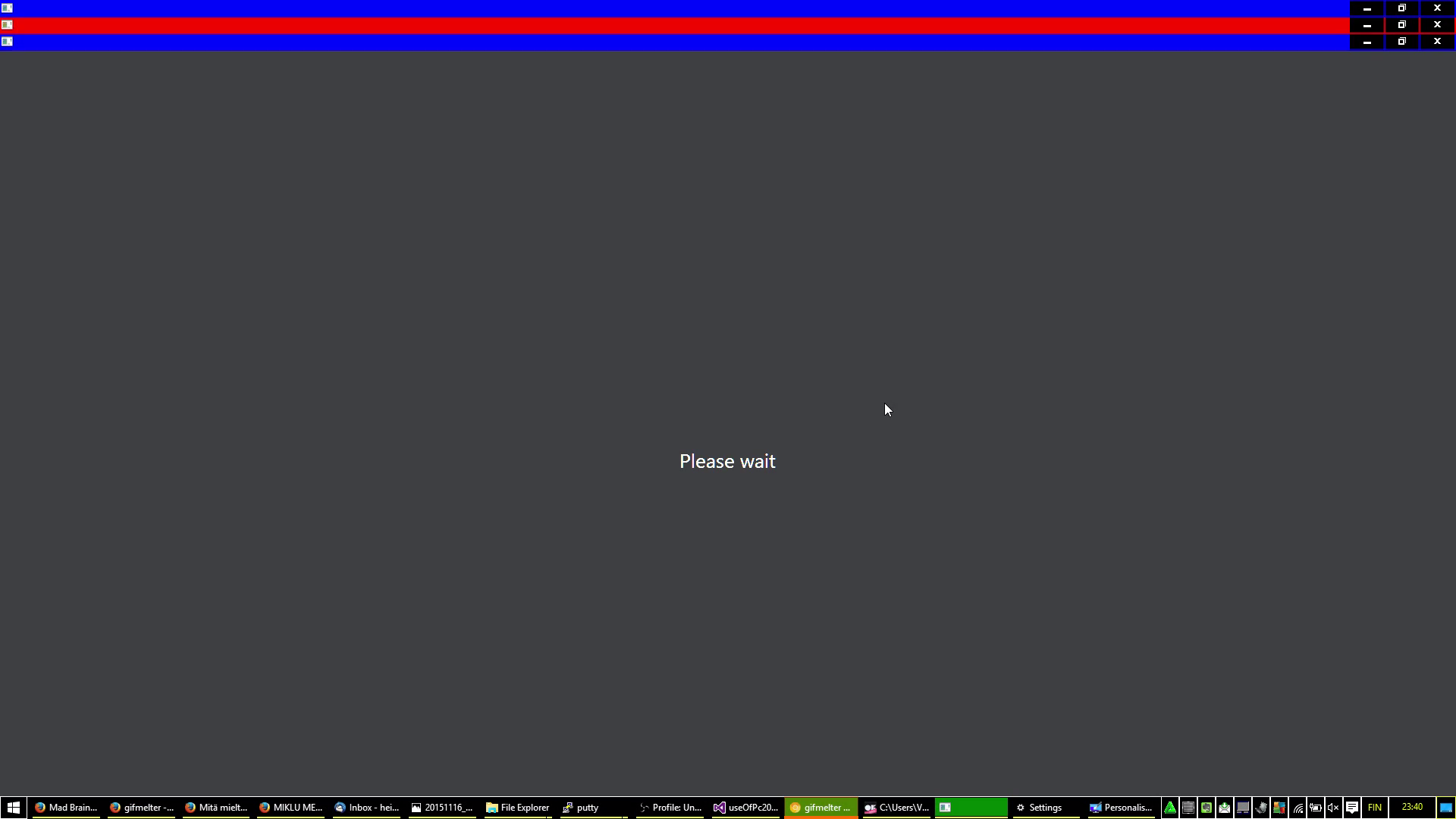
Culture is an interface that allows us to perceive the world. It is a multi-layered humanistic system for understanding our lives. World is the interface that allows us to experience cultures (and perceive them – seeing more of the Earth and its different peoples broadens our personal perspective) – but the proposition I want to make is that the interface is also a culture that allows us to perceive the world – maybe even a world that broadens our culture.
Conclusion must be that cybernetic criticism must be cybernetic in its form in order to enter into the system, but also an outspoken meta-reflection of the machine in order to avoid merely confirming the order of the system and becoming a speechless part of it … (Pold, 2011)
Critically performing with a personal computer and its interface (laptop and software) as a visual jockey or VJ, I had the chance to create an experimental act for four hours during two DJ sets at Askellus, a club occasionally organised by my friend and myself at varying locations in Helsinki. Aimed for creative audience in their twentysomethings we always tend to push boundaries and combine interesting influences into unusual experiences. Performing ”The Use of a Personal Computer 2016” as a part of ”Systems of Representation” course held at Aalto University (lead by Lily Diaz-Kommonen) felt somewhat curious and the right thing to do within this setting.
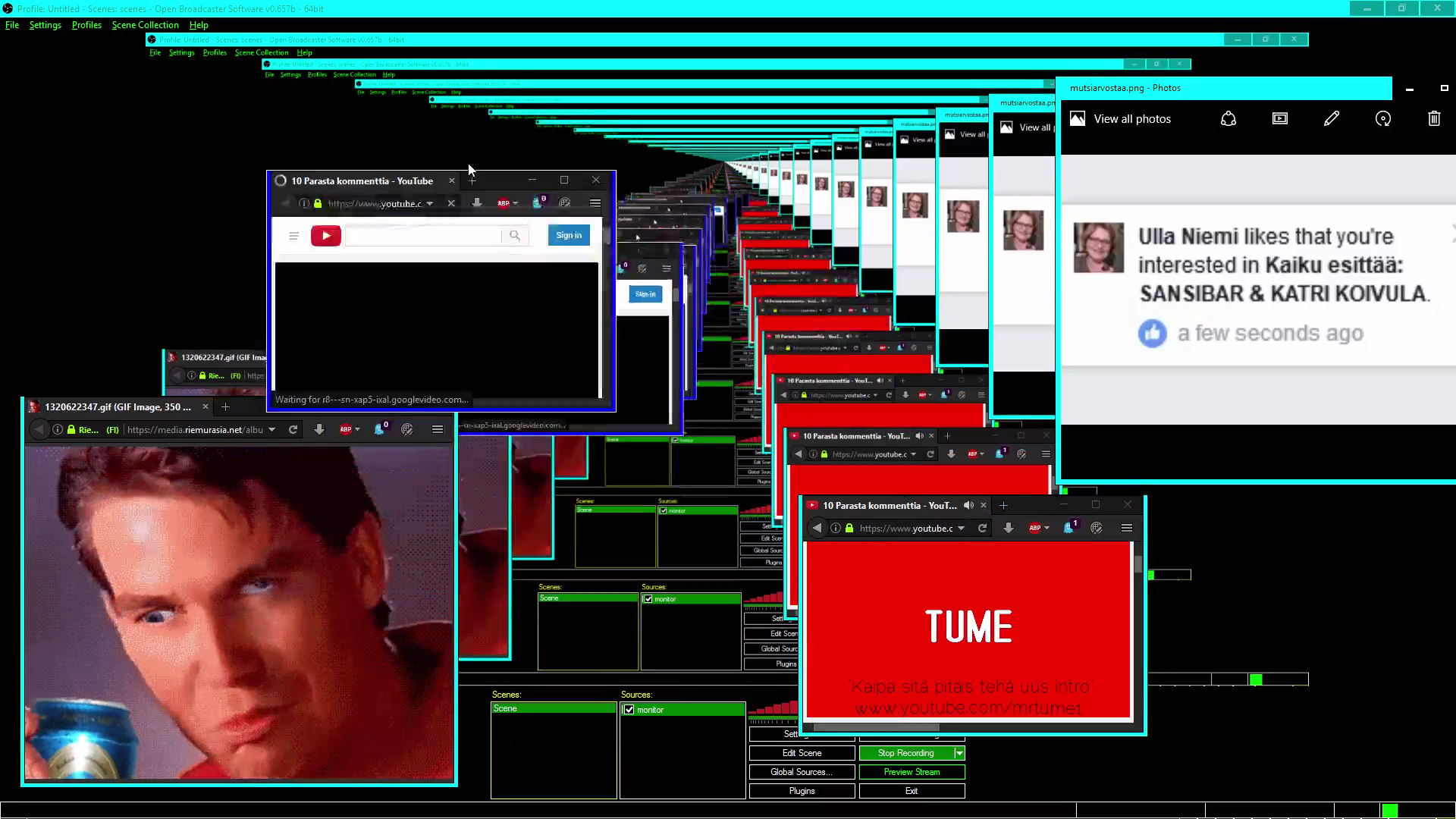
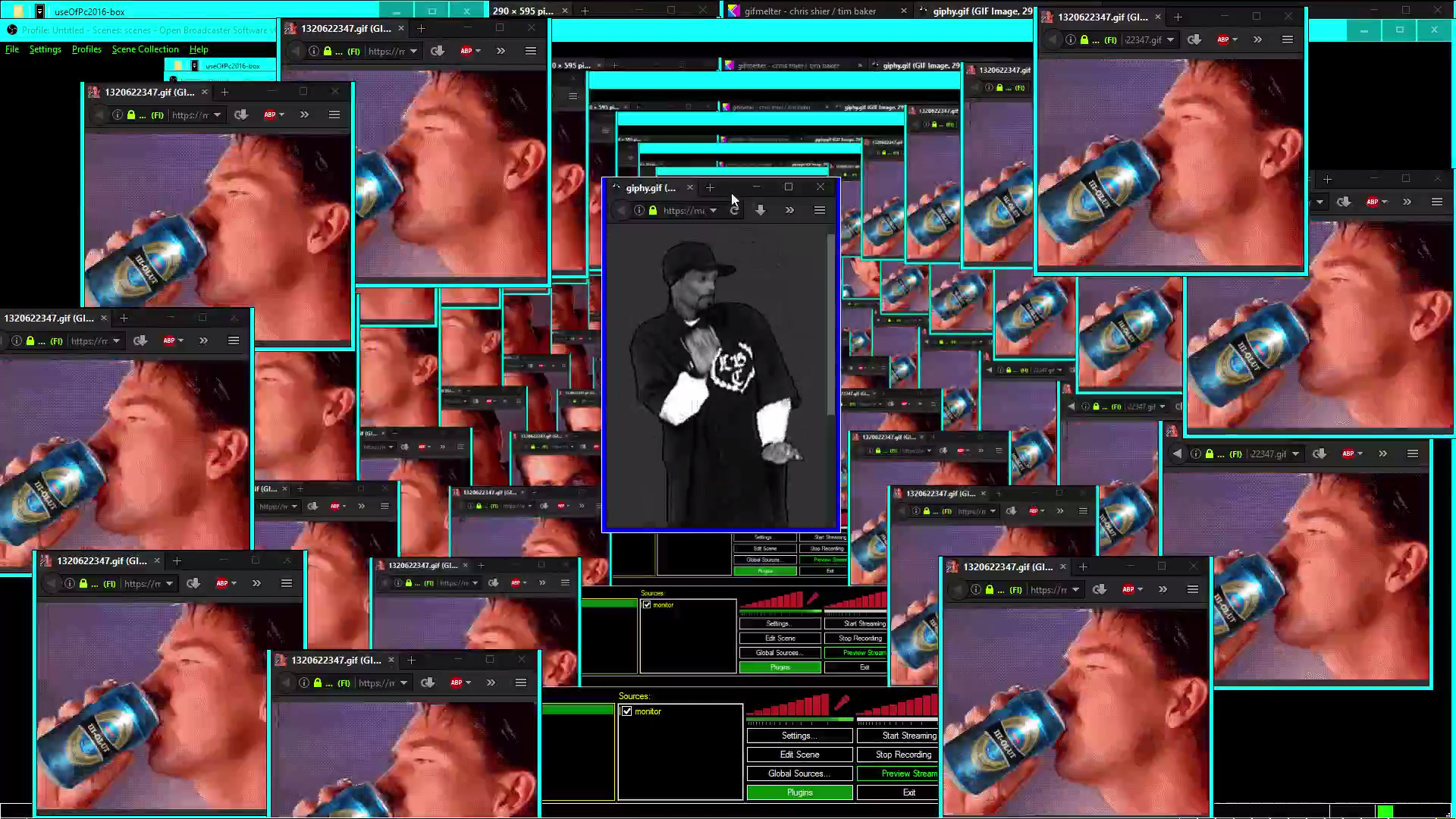
Performance specifications
Essentially VJing with Windows 10 user interface (at times with use of additional software – but not any that is commonly used for VJing), the elements of the demo include:
-
Waiting for boot up
-
Signing in to Windows
-
Accessing personal files
-
Chatting with friends on WhatsApp, Facebook and IRC
-
Resizing windows
-
Experiencing error and loading windows
-
Waiting for programs to open
-
Visual Studio: ”Thanks for your patience”
-
-
-
Customizing Windows 10 (applying a theme)
-
Pushing default theme options to their limits
-
-
Changing settings of F.lux software really strange (darkroom mode)
-
Fooling around on visually experimental websites
-
Visual manipulation/distortion of windows with custom code (written in C++)
-
Forgetting passwords
-
Microsoft Paint graphic design
-
Watching YouTube -videos
-
Coding CSS (to get YouTube search bar hidden)
-
Fiddling around with number-key shortcuts (jumps the video), VJing with those
-
Turning on/off settings such as automated captions
-
-
Opening multiple .gif-pictures
-
Artistic positioning and use of windows
-
-
Browsing files
-
Causing frustration on the audience as they have to wait for me to ”find” something
-
Displaying random files on my computer that the audience might find funny.
-
-
Using software
-
Updating software
-
-
Scanning for viruses
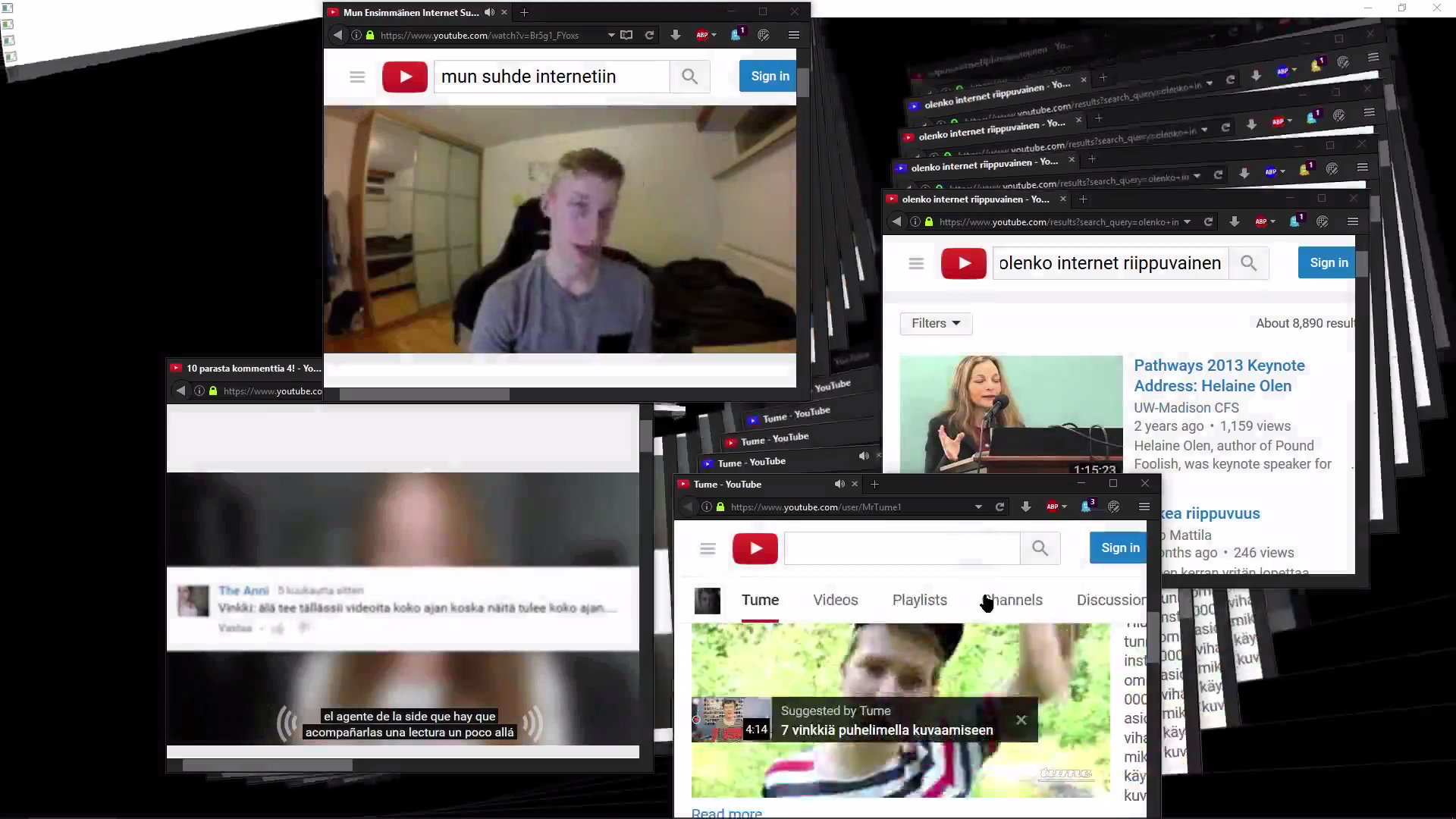
Background ideologies
Taking something “as commonplace” as a computer interface and displaying it as a visual projection I never aimed to get justified as VJing of the traditional type but more as an experimental act, digital theatre, virtual acting. Wanting to push the Windows interface to its limits with several ideas in mind I thought I would be able to deliver a live performance that the audience might find attractive in such a context. Not a club for dancing until early morning but rather a relaxed bar atmosphere, I thought the setting was ideal.
Some ideas that I had were merely for fun, some just plain strange and some I wanted to work as food for thought with conceptual connotations not necessarily immediately obvious. Most important to me was that majority of the performance would be improvised, allowing for flow of consciousness and happy accidents, non-overthought actions.
Brief analysis of the representational connotations
There is much more to analyse in the performance than I will do here, but I will briefly elaborate on both the functional interface (control interface) as well as the overall theme (cultural interface) which I sought to examine.
Our identities nowadays being bound to computer interfaces, perhaps the VJ set was an extraction or culmination of my personal identity. A reflection of my usage of computers, especially the title stating that there will be use of a personal computer, seldom are words like this used to describe computer interaction any more, strengthening the nostalgic ideology. Then again, I used my personal computer and showed personal files and projects stored on it. The title also annotates the Mac versus PC discussion (that I would think went somewhat hard in the 2000’s), giving a hint of where I stand. For instance at one point I believe I did make it obvious that the Windows interface is ugly by changing the visual theme of my operating system into a high-contrast setting. Both for the sole crudeness and coolness of the look and for visual obstructiveness.
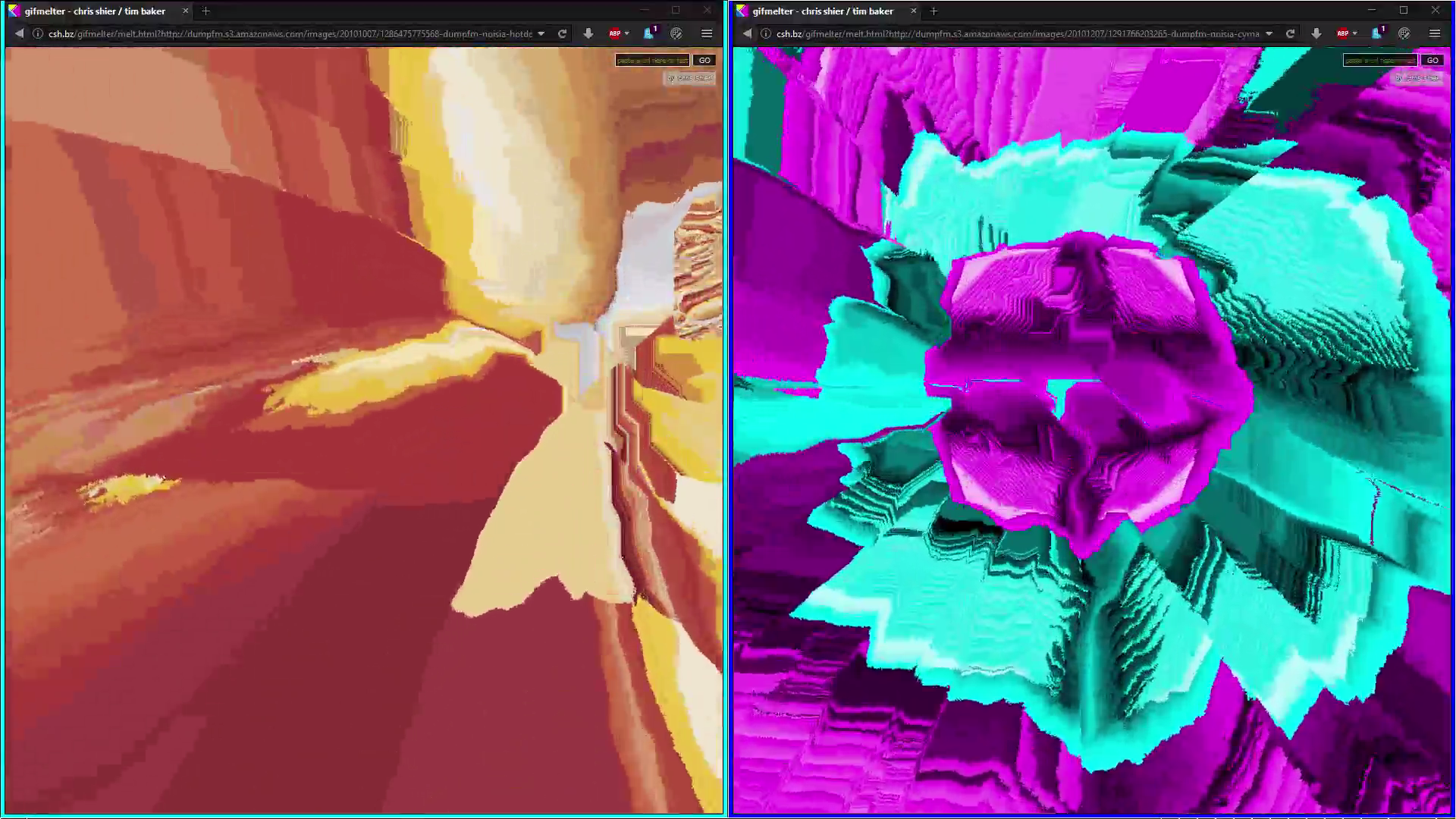
Utilising Gifmelter by Chris Shier and Tim Baker here. See it at: http://csh.bz/gifmelter/melt.html
One’s computer(s) is an extension of their body and mind. At minimum one might customise the operating system’s desktop background to suit one’s visual taste. Our personal cybernetic systems both as a productive tool and access point to knowledge, entertainment, or social networks truly enhances one’s ableness. In the performance, these qualities of the computer are explored and abused, exhibited and reformatted into something completely unusual.
By exhibiting systems often personally consumed or experienced and interacted with, the performance aimed to break the typical connectedness to these media artefacts, ridiculing them and the content we access within the systems. Through both the context of the act and the visual distortion and abuse of the interface, the familiar turns into disruptive and exciting, even entertaining. The typical use of software is turned into exhibitive media performance, ultimately displaying how visual and flat our interaction with computers is.
The software used to distort the two-dimensional visual layout of the interface aims to present the viewer with a new perspective, one that seeks to confuse mentalities and contradict the usual experience, challenging the viewer’s expectations (Bertelsen and Pold, 2004:26) . I aimed to arise questions such as ”what is he doing with the computer?” and ”what is he looking for?” as the audience did not have a direct way to interact with me. Waiting for someone to perform a task on their computer and show something or open up a document can be exhausting and annoying, through this I wanted to show, naively, how dumb the current interfaces are. I even took the performance to the point of updating software and scanning for viruses; presenting for example the ”waste of time” spent with loading bars and cybernetic systems in this sense. Both of these methods and acts performed toggle on some sensory receptors in viewers, perhaps arising further realisations on the idea and aesthetic qualities of interfaces (Pold, 2011:93).
Computers re-set our notion of space-time for example as to storage (images of folders) and communication (immediate), hard disk drives and global networks work as interfaces for representing qualities of the physical world in a mathematical format: digits, algorithms and symbols. House has its windows so that we get light in or can observe the outdoors, but our interfaces have their windows so that we can let information flow and put information in. The feedback loops of input and output are systems that have shifted all aspects of humanity (Pold, 2011:91), creating post-humanistic extensive networks of sensory systems, none of which are real but make us experience an enjoyable ”ecstasy of the real” (Nusselder, 2009:29), ultimately being dirty ugly, visually primitive, forcing us to learn the systems’ languages of interaction and ideologies of representation, further bending our minds towards the cyborg ontology.
Bibliography
Bertelsen, OW and Pold, S (2009). Criticism as an Approach to Interface Aesthetics. New York, NY, USA: ACM ©2004 . 23-32. In NordiCHI ’04 Proceedings of the third Nordic conference on Human-computer interaction.
Nusselder, A (2009). Interface Fantasy: A Lacanian Cyborg Ontology. Cambridge, MA: MIT Press. 11-29.
Pold, S. P. (2011). Interface Perception: The Cybernetic Mentality and Its Critics: Ubermorgen.com. In C. U. Andersen & S. B. Pold (Eds.), Interface Criticism: Aesthetics Beyond Buttons (pp. 91-113). Aarhus: Aarhus University Press.
